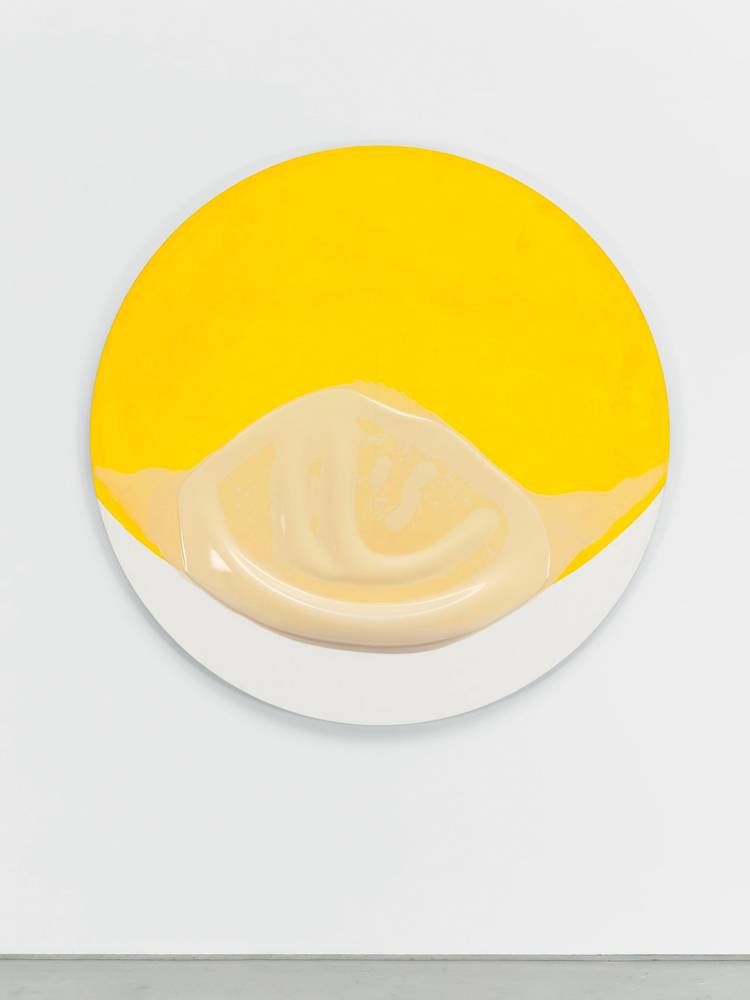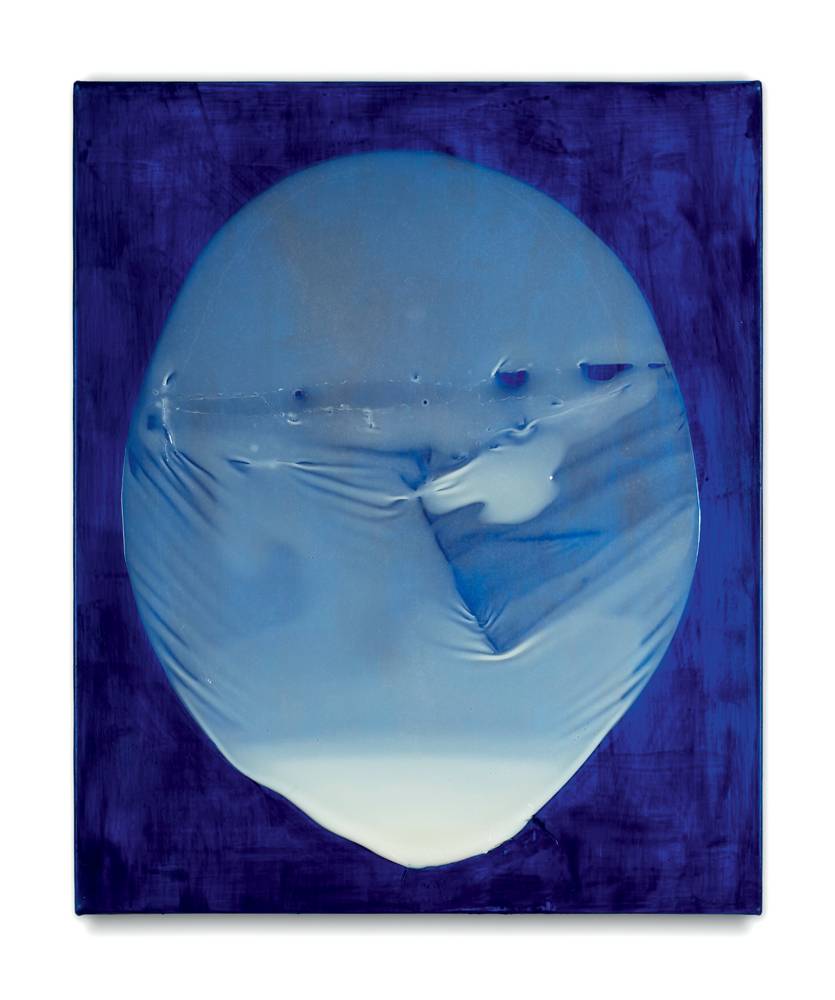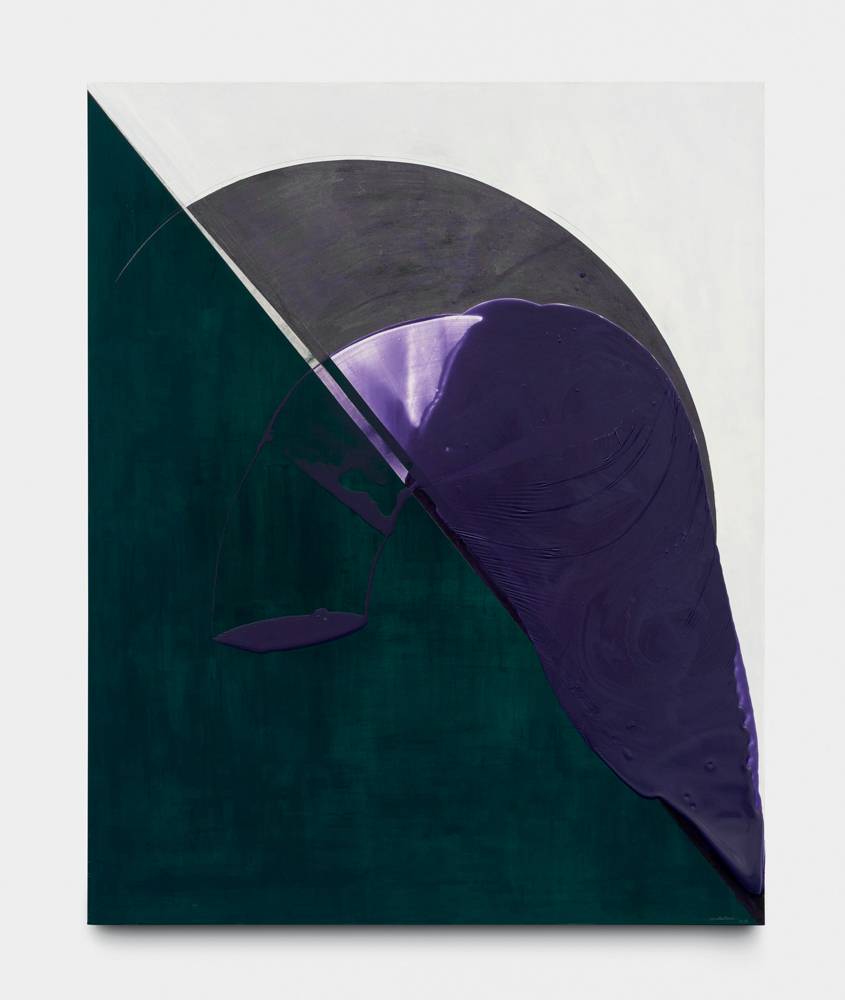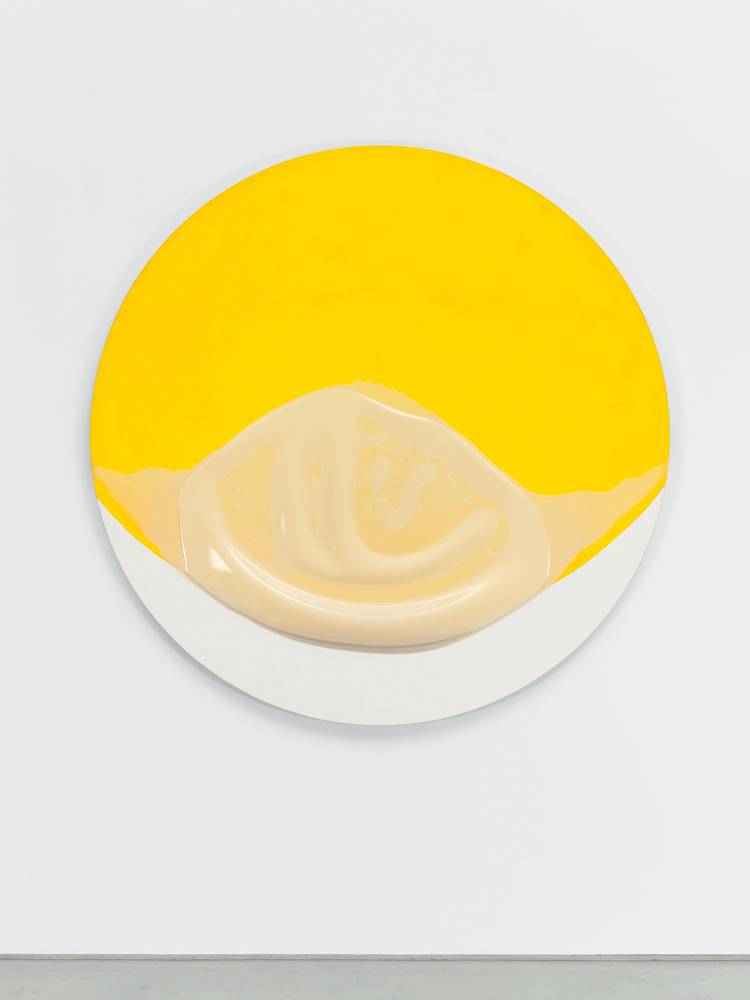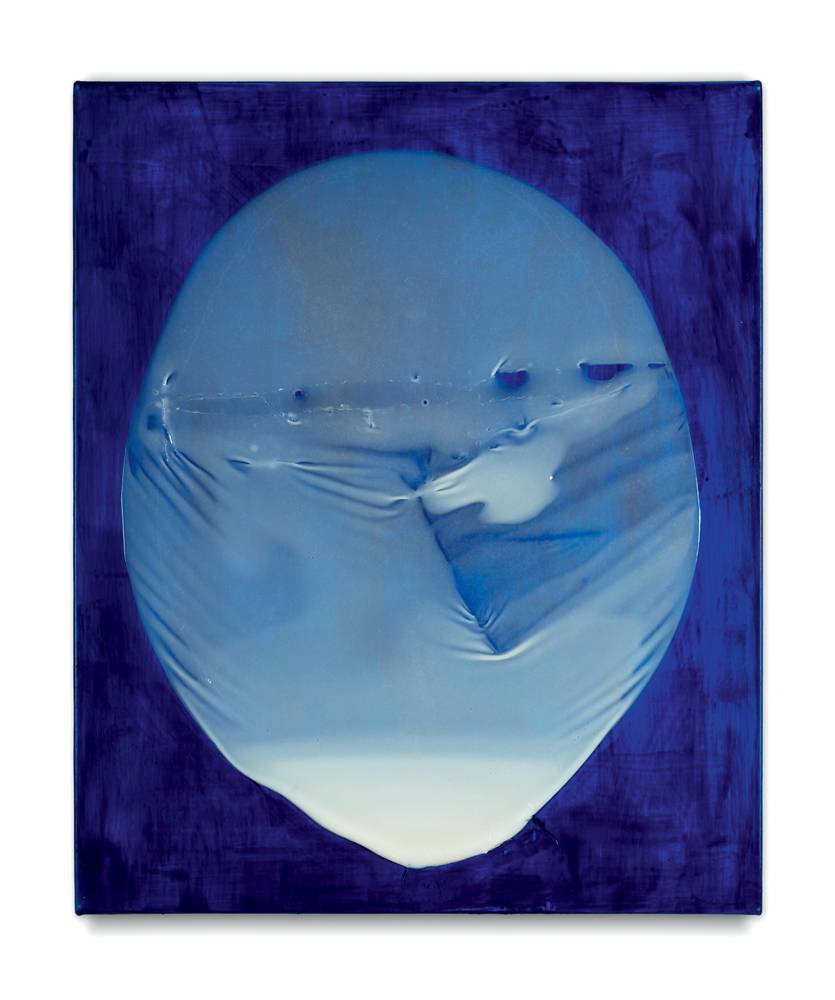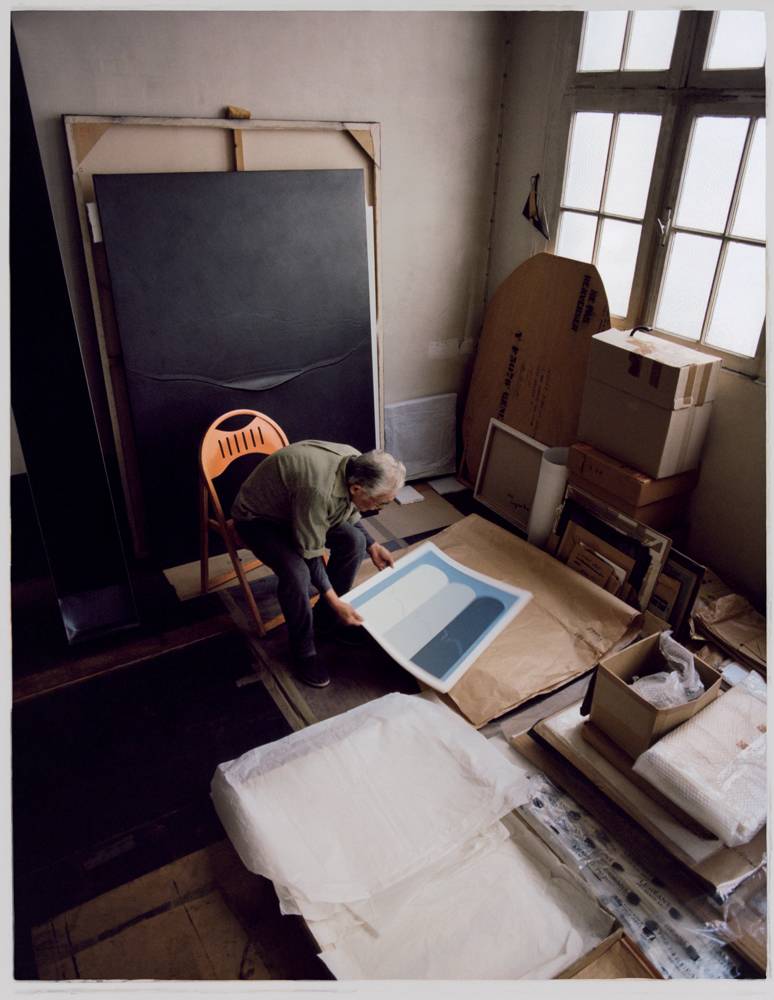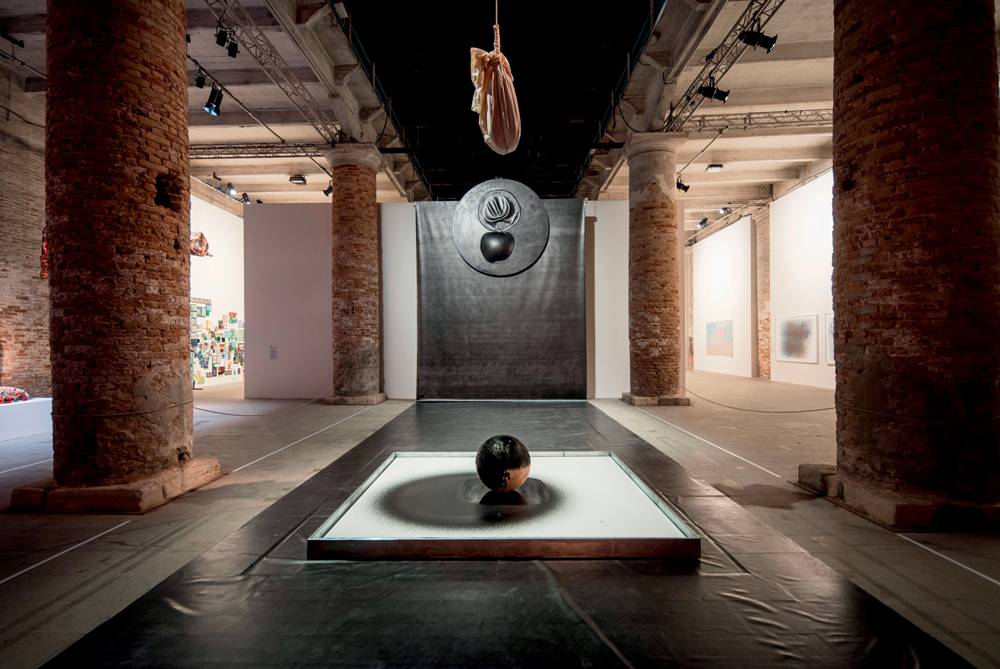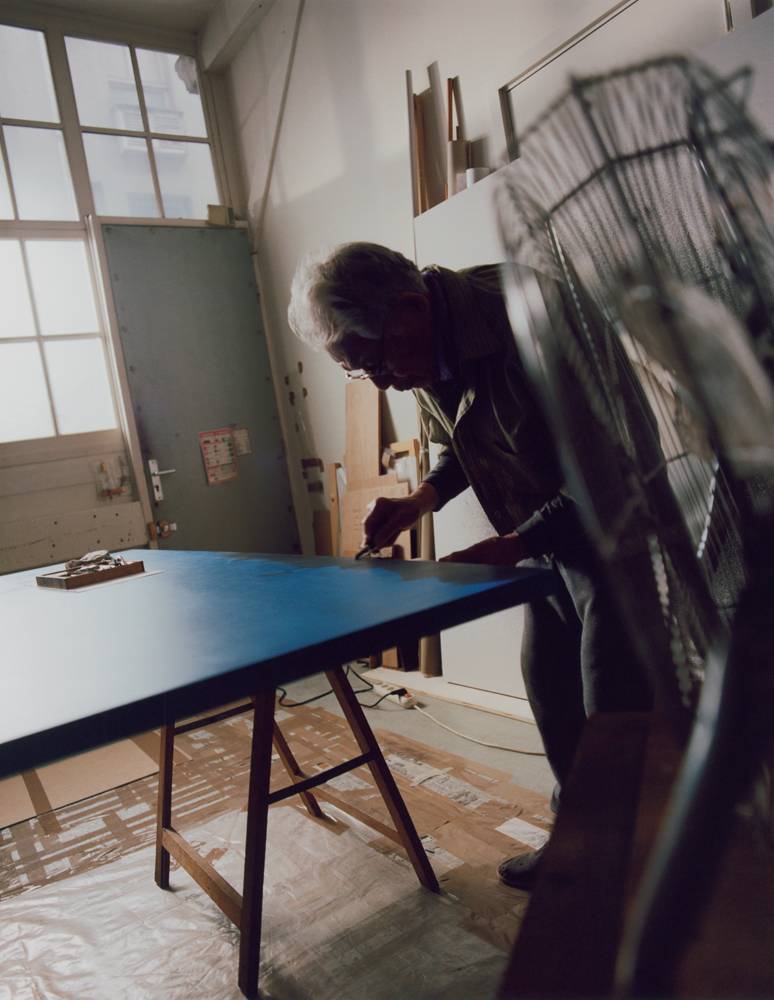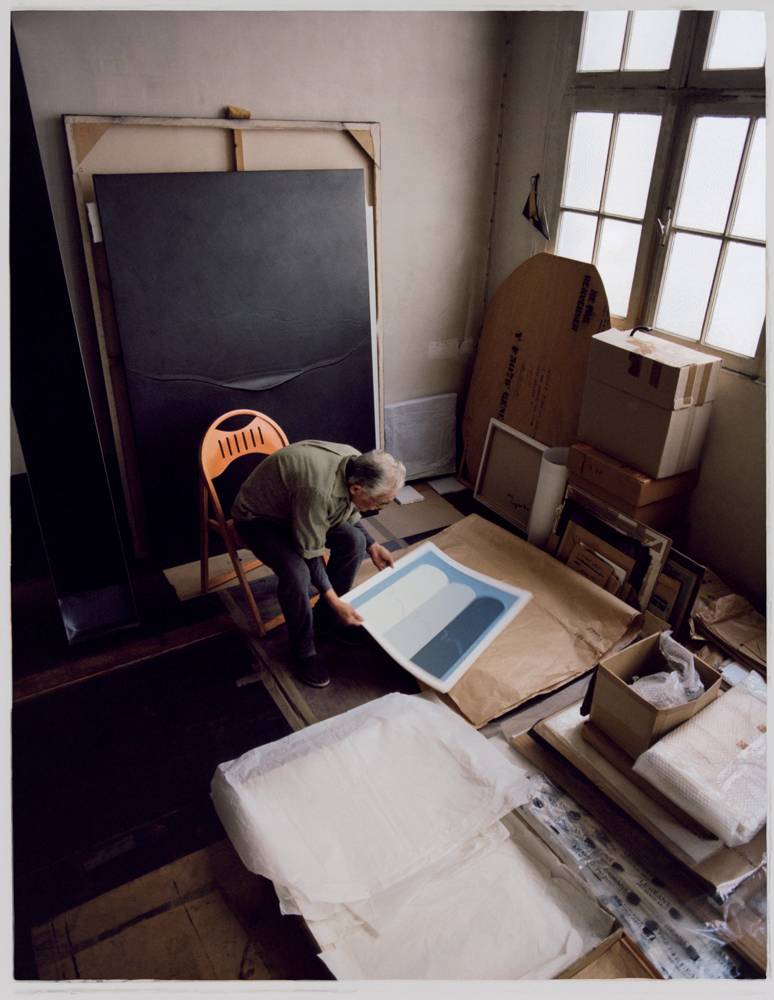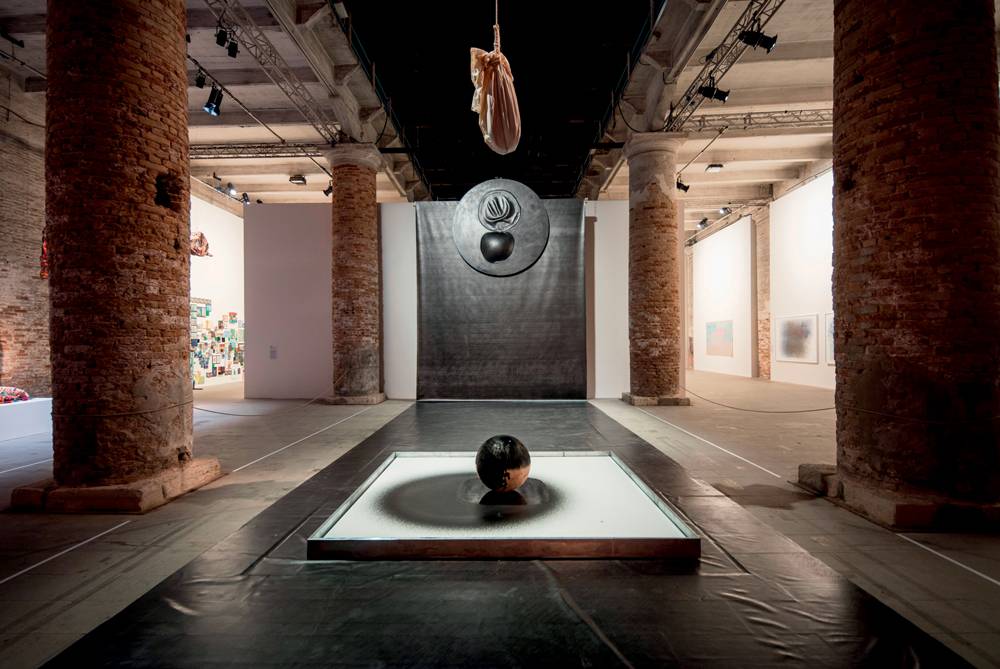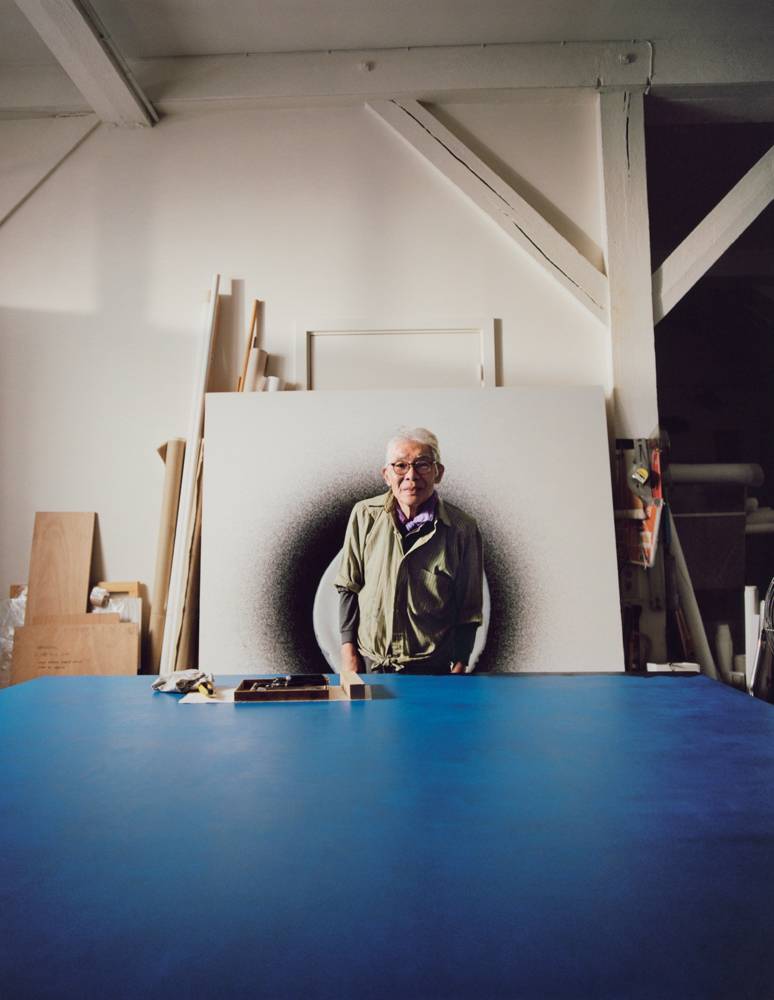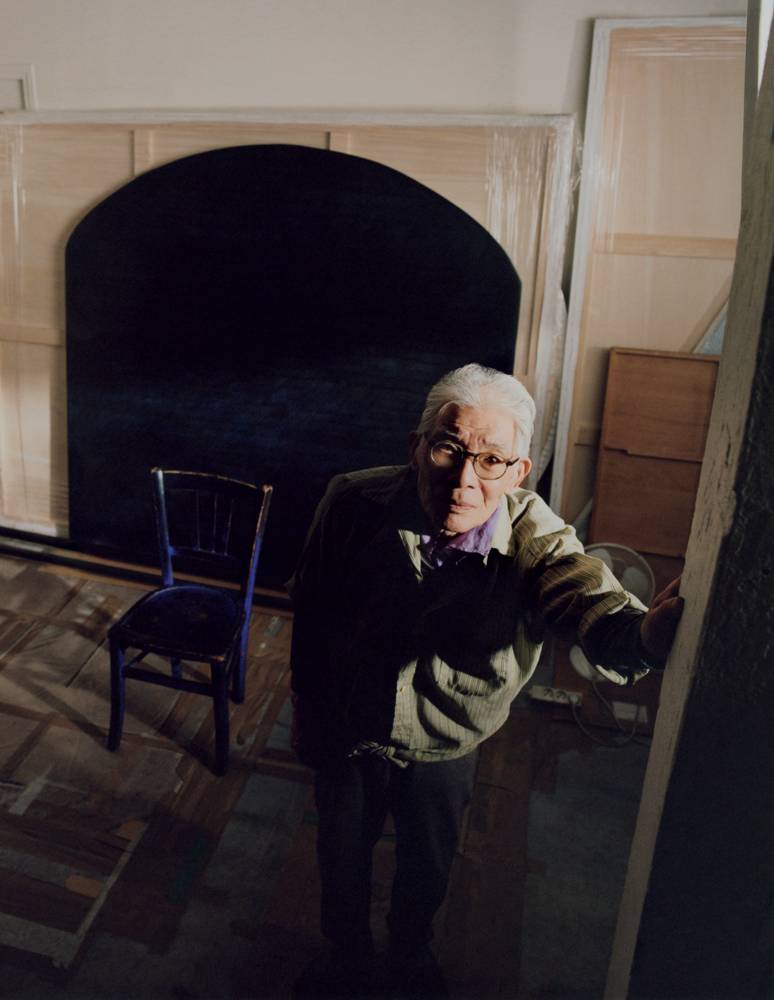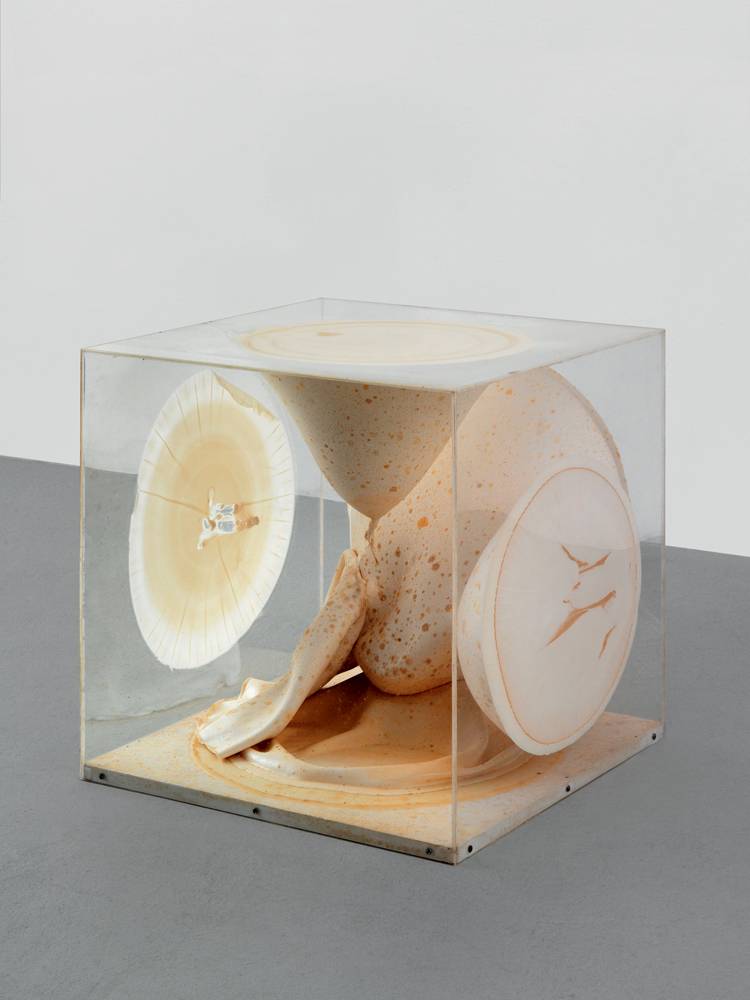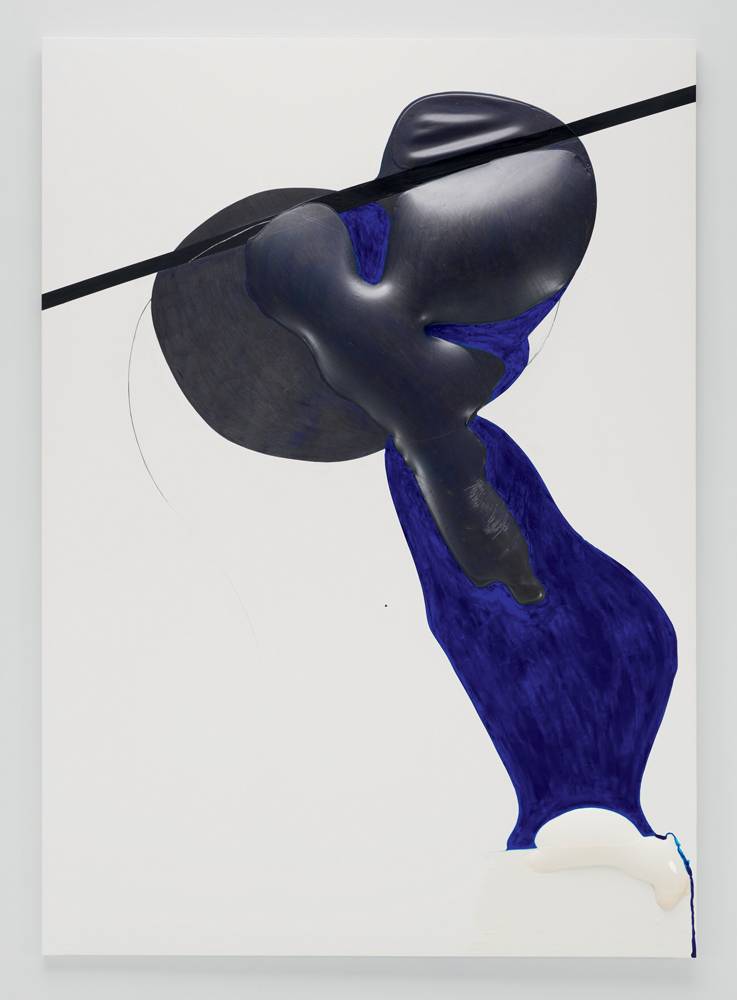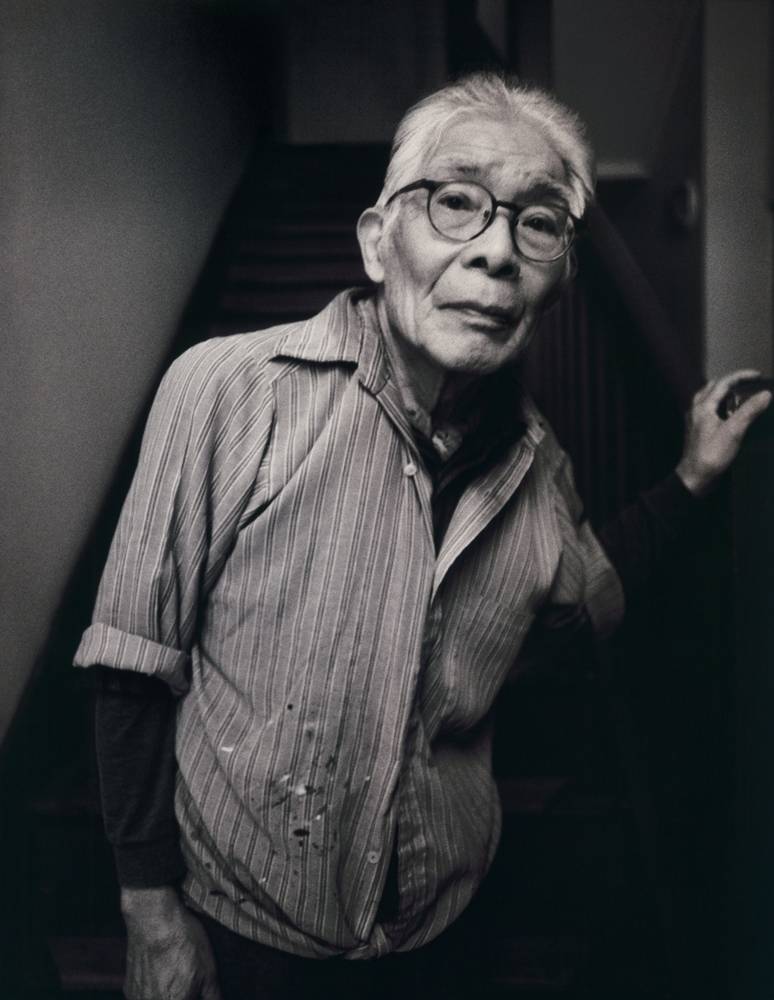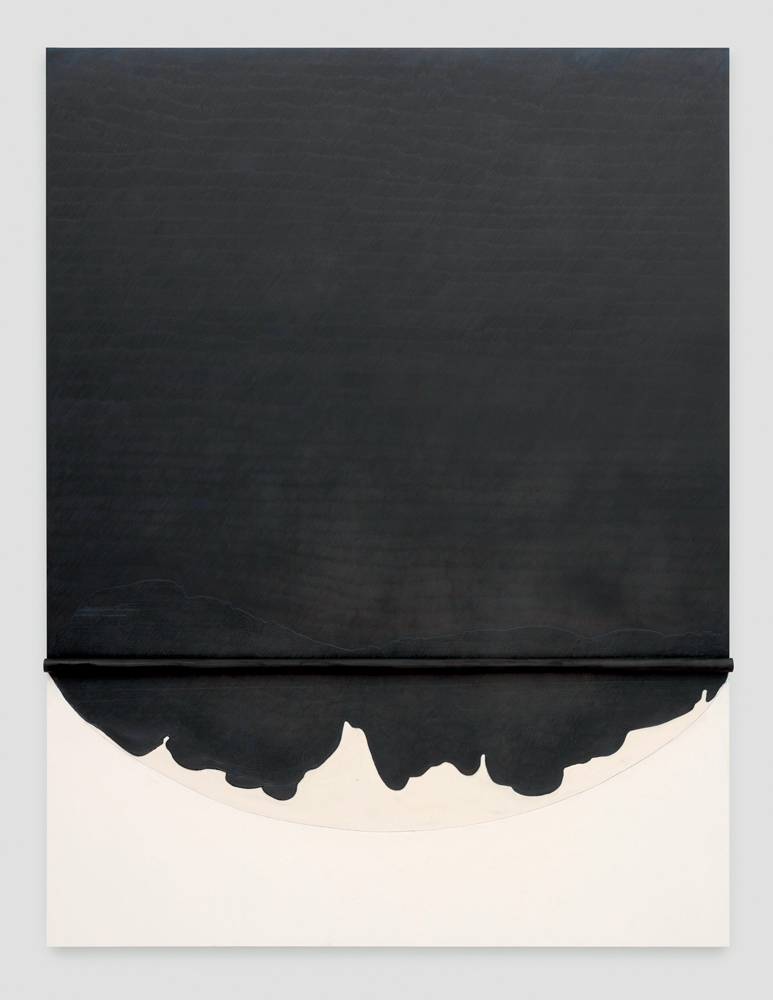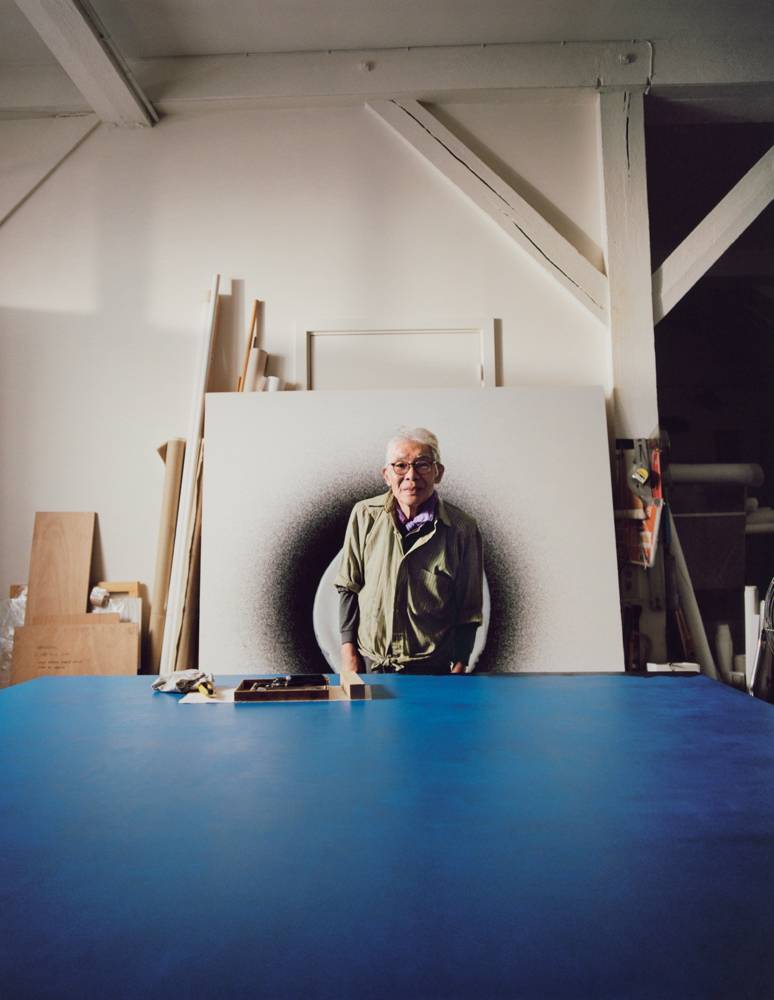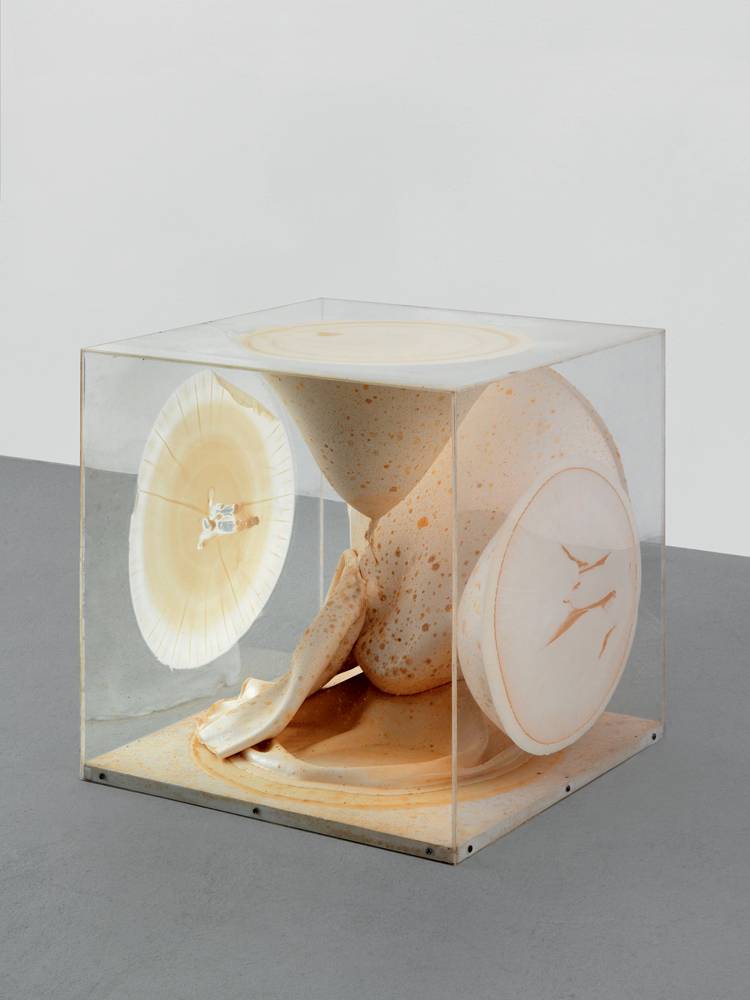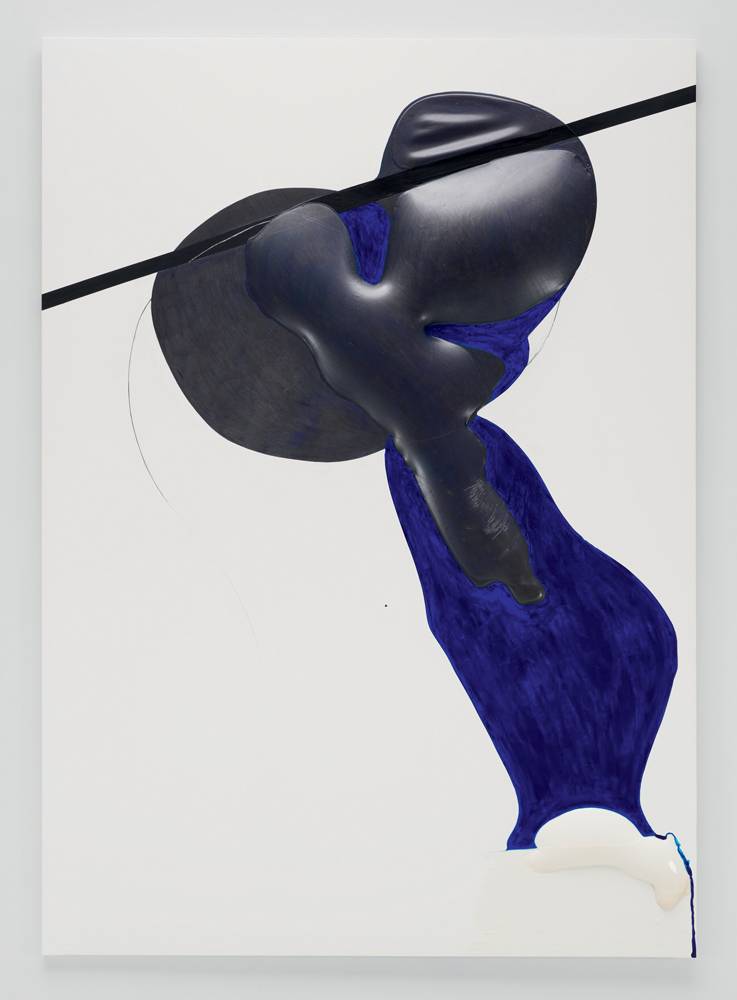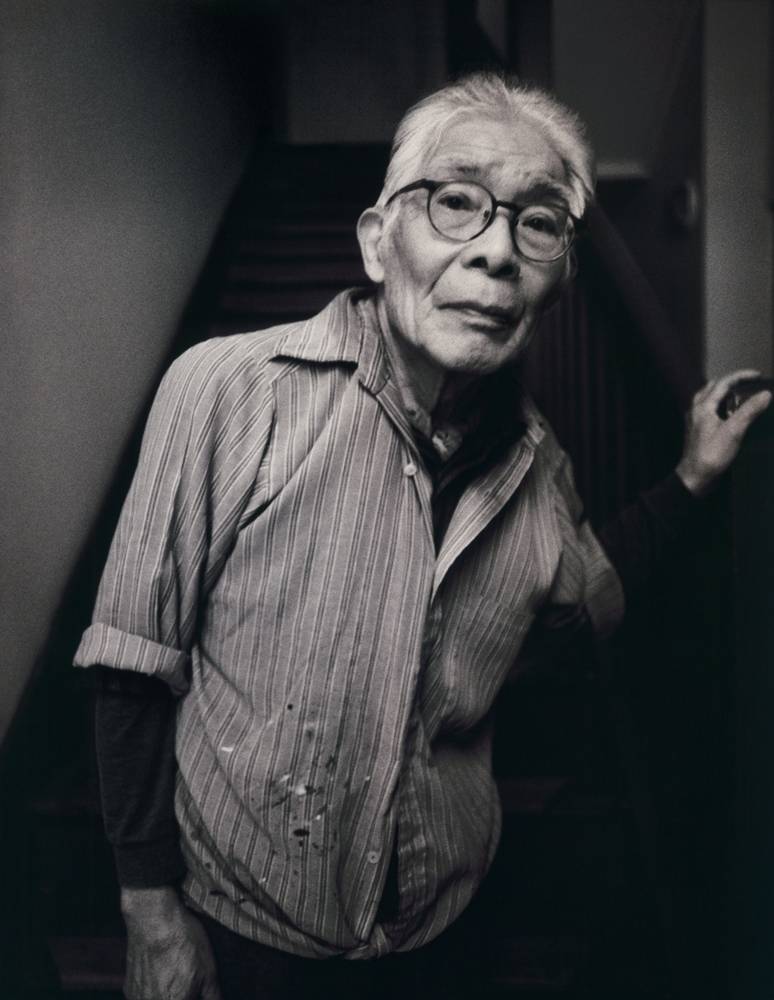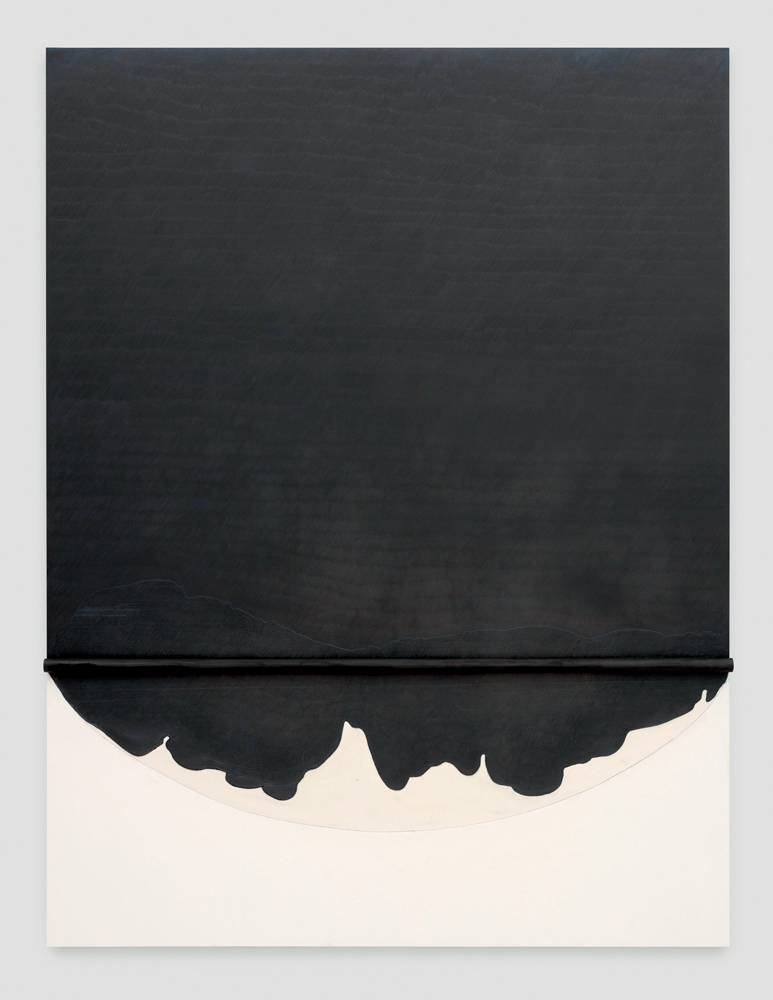
7

7
Dive into Takesada Matsutani’s atelier, exhibited at the Hauser&Wirth Paris gallery
Takesada Matsutani, artiste japonais à la créativité toujours aussi folle malgré ses 87 ans, nous ouvre les portes de son atelier parisien à l’occasion de son exposition à la galerie Hauser & Wirth, ouverte jusqu’au 19 mai 2024. Visite guidée de 60 ans de création habitée par toutes les pulsations de la vie, de ses premières pièces liées au mouvement Gutai à ses créations colorées façon Hard Edge jusqu’à ses installations monumentales au crayon graphite.
Propos recueillis par Thibaut Wychowanok,
Propos recueillis par Thibaut Wychowanok.
Interview with artist Takesada Matsutani in his parisian studio
Numéro Art : n the early 60s, you came up with the brilliant idea of working with vinyl glue, which has become your signature. Inflating it directly on the canvas, you challenge the boundaries of painting, expanding it into three dimensions in a way that is sensual and even erotic, given how the glue evokes ejaculations and ovulations. Where did this idea come from?
Takesada Matsutani : I was born before the war in a rather desperate Japan where imagining such a thing would not have been possible. After the war, material conditions were hard, of course, but our minds were much freer. Nonetheless, I was still influenced by Cubism and Surrealism – Western art, in particular French art, was everywhere in Japan at the time. Moreover, my painting was entirely figurative. Then I discovered the Gutai movement [an important group of Japanese iconoclasts who promoted a “concrete” art through which they sought to breathe life into matter]. Its members seemed much freer to me – they were starting from scratch. So I decided to get closer to the founder, Jiro Yoshihara. This was in the early 60s. Yoshihara kept rejecting my work, saying “No, no, and again no!” I’d show him a piece and he’d pull out a catalogue from the shelf and say, “Look, Fontana has already done it,” or, “Jackson Pollock has already done it. You have to do something that’s never been done before, something new!” That was the mantra of the Gutai movement. I needed to come up with and create new images. Inspiration came from a friend who worked in the medical faculty. I was able to observe cell samples under a microscope – I was fascinated by these organic and somewhat sexual forms. All of a sudden, a new image came to me: it wasn’t a sculpture but a material, and a canvas that was flat yet three-dimensional. I found some vinyl glue, which I inflated on the canvas, at first by blowing into myself. It became a sort of skin. Then I let the wind and chance do their thing, piercing and shaping it. Sometimes I intervened by turning the canvas around… And Yoshihara finally accepted my work
Rencontre avec l’artiste japonais Takesada Matsutani, dans son atelier parisien
Numéro Art : Au début des années 60, vous avez l’idée géniale de travailler avec un nouveau matériau, la colle vinylique, qui deviendra votre signature. Gonflant directement sur la toile, la matière sensuelle, voire sexuelle – tant le rendu évoque une éjaculation ou une ovulation– dépasse les frontières du tableau, qui s’étend en trois dimensions. Mais où cette idée trouve-t-elle son origine ?
Takesada Matsutani : Je suis né un peu avant la guerre au sein d’un Japon désespéré où imaginer une telle chose n’aurait pas été possible. Une fois la guerre terminée, les conditions matérielles étaient difficiles, bien sûr, mais notre esprit était bien plus libre. Mais j’étais encore influencé par le cubisme et le surréalisme : l’art occidental, et particulièrement français, était très présent au Japon à l’époque. Ma peinture était d’ailleurs totalement figurative. Puis j’ai découvert le mouvement Gutai [mouvement iconoclaste très important au Japon promouvant un art “concret” donnant vie à la matière]. Ces membres me paraissaient plus libres. Ils recommençaient tout à zéro. J’ai alors décidé de me rendre de me rapprocher de Jiro Yoshihara, son fondateur. Nous étions au début des années 60. Yoshihara rejetait continuellement mes propositions. Il me disait : “Non”, “Non” et encore “Non”. Je lui montrais une œuvre et il me sortait un catalogue de la bibliothèque en m’expliquant : “Regarde, Fontana l’a déjà fait.” Ou : “Jackson Pollock l’a déjà fait. Tu dois faire quelque chose qui n’a jamais été fait avant, quelque chose de nouveau.” C’était le slogan du mouvement Gutai. J’avais besoin d’imaginer et de créer de nouvelles images. L’inspiration m’est venue grâce à un ami qui travaillait à la faculté de médecine. J’ai pu y observer des cellules au microscope : j’étais fasciné par ces formes organiques et un peu sexuelles. Tout d’un coup, j’avais une nouvelle image en tête : ce n’était pas une sculpture, mais un matériau et une toile plate et pourtant en trois dimensions. J’ai trouvé de la colle vinylique que j’ai gonflée sur la toile, d’abord avec mon propre souffle. Cela devenait comme une peau. Et puis j’ai laissé le vent et le hasard faire son œuvre pour la percer et lui donner sa forme. Parfois j’intervenais moi-même en tournant la toile… Et mes œuvres furent enfin acceptées par Yoshihara !
Interview with artist Takesada Matsutani in his parisian studio
Numéro Art : n the early 60s, you came up with the brilliant idea of working with vinyl glue, which has become your signature. Inflating it directly on the canvas, you challenge the boundaries of painting, expanding it into three dimensions in a way that is sensual and even erotic, given how the glue evokes ejaculations and ovulations. Where did this idea come from?
Takesada Matsutani : I was born before the war in a rather desperate Japan where imagining such a thing would not have been possible. After the war, material conditions were hard, of course, but our minds were much freer. Nonetheless, I was still influenced by Cubism and Surrealism – Western art, in particular French art, was everywhere in Japan at the time. Moreover, my painting was entirely figurative. Then I discovered the Gutai movement [an important group of Japanese iconoclasts who promoted a “concrete” art through which they sought to breathe life into matter]. Its members seemed much freer to me – they were starting from scratch. So I decided to get closer to the founder, Jiro Yoshihara. This was in the early 60s. Yoshihara kept rejecting my work, saying “No, no, and again no!” I’d show him a piece and he’d pull out a catalogue from the shelf and say, “Look, Fontana has already done it,” or, “Jackson Pollock has already done it. You have to do something that’s never been done before, something new!” That was the mantra of the Gutai movement. I needed to come up with and create new images. Inspiration came from a friend who worked in the medical faculty. I was able to observe cell samples under a microscope – I was fascinated by these organic and somewhat sexual forms. All of a sudden, a new image came to me: it wasn’t a sculpture but a material, and a canvas that was flat yet three-dimensional. I found some vinyl glue, which I inflated on the canvas, at first by blowing into myself. It became a sort of skin. Then I let the wind and chance do their thing, piercing and shaping it. Sometimes I intervened by turning the canvas around… And Yoshihara finally accepted my work
Rencontre avec l’artiste japonais Takesada Matsutani, dans son atelier parisien
Numéro Art : Au début des années 60, vous avez l’idée géniale de travailler avec un nouveau matériau, la colle vinylique, qui deviendra votre signature. Gonflant directement sur la toile, la matière sensuelle, voire sexuelle – tant le rendu évoque une éjaculation ou une ovulation– dépasse les frontières du tableau, qui s’étend en trois dimensions. Mais où cette idée trouve-t-elle son origine ?
Takesada Matsutani : Je suis né un peu avant la guerre au sein d’un Japon désespéré où imaginer une telle chose n’aurait pas été possible. Une fois la guerre terminée, les conditions matérielles étaient difficiles, bien sûr, mais notre esprit était bien plus libre. Mais j’étais encore influencé par le cubisme et le surréalisme : l’art occidental, et particulièrement français, était très présent au Japon à l’époque. Ma peinture était d’ailleurs totalement figurative. Puis j’ai découvert le mouvement Gutai [mouvement iconoclaste très important au Japon promouvant un art “concret” donnant vie à la matière]. Ces membres me paraissaient plus libres. Ils recommençaient tout à zéro. J’ai alors décidé de me rendre de me rapprocher de Jiro Yoshihara, son fondateur. Nous étions au début des années 60. Yoshihara rejetait continuellement mes propositions. Il me disait : “Non”, “Non” et encore “Non”. Je lui montrais une œuvre et il me sortait un catalogue de la bibliothèque en m’expliquant : “Regarde, Fontana l’a déjà fait.” Ou : “Jackson Pollock l’a déjà fait. Tu dois faire quelque chose qui n’a jamais été fait avant, quelque chose de nouveau.” C’était le slogan du mouvement Gutai. J’avais besoin d’imaginer et de créer de nouvelles images. L’inspiration m’est venue grâce à un ami qui travaillait à la faculté de médecine. J’ai pu y observer des cellules au microscope : j’étais fasciné par ces formes organiques et un peu sexuelles. Tout d’un coup, j’avais une nouvelle image en tête : ce n’était pas une sculpture, mais un matériau et une toile plate et pourtant en trois dimensions. J’ai trouvé de la colle vinylique que j’ai gonflée sur la toile, d’abord avec mon propre souffle. Cela devenait comme une peau. Et puis j’ai laissé le vent et le hasard faire son œuvre pour la percer et lui donner sa forme. Parfois j’intervenais moi-même en tournant la toile… Et mes œuvres furent enfin acceptées par Yoshihara !
I’m not a philosopher. I feel time, I feel the cosmos. We live inside the impermanence, the long reach of cosmos.” – Takesada Matsutani
The year was 1963 and, as in some of your later works (I’m thinking of the monumental installations you began in 1979, which were often associated with performances), you manipulated chance. You don’t represent nature or life – you create it, you make it happen, along with its share of chaos. Even the trace of your breath is captured and preserved. Would you say the idea of the cosmos lies at the heart of your work?
Things don’t come through ideas, but through action. I’m not a philosopher. I feel time, I feel the cosmos. We live inside the impermanence, the long reach of cosmos. My knowledge and my conscience time, and meditation, and on the are fed by my sensations and my emotions, by other the present moment, or a what I feel and experience. Why did I choose succession of moments, and the to use graphite pencils in 1977? Because I had occasional desire to freeze that a lot of time on my hands. I knew no one! All moment for eternity, like that little I had at my disposal was a blank sheet of incident of life captured forever paper. What could I do? I’m not a poet, I wasn’t going to write stories. So I picked up a pencil and drew a line every day, then another, and another until the surface turned black. Naturally I thought of the Japanese tradition of calligraphy. But copying wasn’t allowed – I had to do something new! So I started doing these 10 m-long formats that I would hang up. To come back to the cosmos, the best way to be part of it is to undertake this type of work, to put yourself in this state of mind – one line after another, again and again. That’s a good start. A small part of the cosmos we live in.
This makes it sound like your work is based on a sort of temporal duality: on the one hand impermanence, the long reach of time, and meditation, and on the other the present moment, or a succession of moments, and the occasional desire to freeze the moment for eternity, like that little incident of life captured forever when the glue sets…
Yes, time is in motion. Every moment is unique. Every moment is different.
Je ne suis pas un philosophe. Je suis dans l’action. Je ressens le temps, je ressens le cosmos. Ma connaissance et ma conscience sont nourries par mes sensations et mes émotions.” – Takesada Matsutani
Nous sommes alors en 1963 et, comme dans certaines œuvres qui suivront – je pense à vos installations monumentales initiées en 1979 et souvent associées à des performances –, un hasard maîtrisé semble toujours participer à la création. Vous n’y représentez pas la nature ou la vie, vous la créez, vous la faites advenir avec sa part de chaos. Votre souffle lui-même y est gardé, capturé, préservé. L’idée du cosmos est-elle au cœur de vos œuvres ?
Cela n’arrive pas par l’idée, mais par l’action. Je ne suis pas un philosophe. Je ressens le temps, je ressens le cosmos. Le cosmos, nous vivons en son sein. Ma connaissance et ma conscience sont nourries par mes sensations et mes émotions. Pourquoi est-ce que je choisis d’utiliser des crayons graphites en 1977 ? Parce que j’ai beaucoup de temps. Personne ne me connaît ! Je n’ai qu’une feuille blanche à disposition. Et que puis-je faire ? Je ne suis pas poète. Je ne vais pas écrire des histoires. Alors je me munis d’un crayon et chaque jour je réalise une ligne, puis une autre ligne, puis une autre ligne jusqu’à ce que la surface se noircisse. Évidemment je pense alors à la tradition japonaise de la calligraphie. Mais il ne faut pas copier ! Il faut faire quelque chose de nouveau ! Et je me lance dans des formats de 10 mètres de long que je suspends ! Pour en revenir au cosmos, la meilleure manière d’en faire partie est de réaliser ce type d’œuvre, de se mettre dans cet état d’esprit, une ligne après l’autre, encore et encore. Voilà un bon début. Une petite part du cosmos dans lequel nous vivons.
I’m not a philosopher. I feel time, I feel the cosmos. We live inside the impermanence, the long reach of cosmos.” – Takesada Matsutani
The year was 1963 and, as in some of your later works (I’m thinking of the monumental installations you began in 1979, which were often associated with performances), you manipulated chance. You don’t represent nature or life – you create it, you make it happen, along with its share of chaos. Even the trace of your breath is captured and preserved. Would you say the idea of the cosmos lies at the heart of your work?
Things don’t come through ideas, but through action. I’m not a philosopher. I feel time, I feel the cosmos. We live inside the impermanence, the long reach of cosmos. My knowledge and my conscience time, and meditation, and on the are fed by my sensations and my emotions, by other the present moment, or a what I feel and experience. Why did I choose succession of moments, and the to use graphite pencils in 1977? Because I had occasional desire to freeze that a lot of time on my hands. I knew no one! All moment for eternity, like that little I had at my disposal was a blank sheet of incident of life captured forever paper. What could I do? I’m not a poet, I wasn’t going to write stories. So I picked up a pencil and drew a line every day, then another, and another until the surface turned black. Naturally I thought of the Japanese tradition of calligraphy. But copying wasn’t allowed – I had to do something new! So I started doing these 10 m-long formats that I would hang up. To come back to the cosmos, the best way to be part of it is to undertake this type of work, to put yourself in this state of mind – one line after another, again and again. That’s a good start. A small part of the cosmos we live in.
This makes it sound like your work is based on a sort of temporal duality: on the one hand impermanence, the long reach of time, and meditation, and on the other the present moment, or a succession of moments, and the occasional desire to freeze the moment for eternity, like that little incident of life captured forever when the glue sets…
Yes, time is in motion. Every moment is unique. Every moment is different.
Je ne suis pas un philosophe. Je suis dans l’action. Je ressens le temps, je ressens le cosmos. Ma connaissance et ma conscience sont nourries par mes sensations et mes émotions.” – Takesada Matsutani
Nous sommes alors en 1963 et, comme dans certaines œuvres qui suivront – je pense à vos installations monumentales initiées en 1979 et souvent associées à des performances –, un hasard maîtrisé semble toujours participer à la création. Vous n’y représentez pas la nature ou la vie, vous la créez, vous la faites advenir avec sa part de chaos. Votre souffle lui-même y est gardé, capturé, préservé. L’idée du cosmos est-elle au cœur de vos œuvres ?
Cela n’arrive pas par l’idée, mais par l’action. Je ne suis pas un philosophe. Je ressens le temps, je ressens le cosmos. Le cosmos, nous vivons en son sein. Ma connaissance et ma conscience sont nourries par mes sensations et mes émotions. Pourquoi est-ce que je choisis d’utiliser des crayons graphites en 1977 ? Parce que j’ai beaucoup de temps. Personne ne me connaît ! Je n’ai qu’une feuille blanche à disposition. Et que puis-je faire ? Je ne suis pas poète. Je ne vais pas écrire des histoires. Alors je me munis d’un crayon et chaque jour je réalise une ligne, puis une autre ligne, puis une autre ligne jusqu’à ce que la surface se noircisse. Évidemment je pense alors à la tradition japonaise de la calligraphie. Mais il ne faut pas copier ! Il faut faire quelque chose de nouveau ! Et je me lance dans des formats de 10 mètres de long que je suspends ! Pour en revenir au cosmos, la meilleure manière d’en faire partie est de réaliser ce type d’œuvre, de se mettre dans cet état d’esprit, une ligne après l’autre, encore et encore. Voilà un bon début. Une petite part du cosmos dans lequel nous vivons.
Arriving in Paris in 1966 was an important moment in your life. You took part in a competition and won a six-month residency, but afterwards you never really left the city. Your studio and your archives are now to be found in the 11th arrondissement. What happened?
I ask myself the same question. There’s no short answer. Maybe you have to go back to my early years. I didn’t go to school much. Of course, secondary school was compulsory, but at 15 I contracted tuberculosis. I had to stay in isolation at home or in a sanatorium. I drew a lot. One or two years went by. Nobody needed me. They needed a healthy young man! So I turned to painting. And I ended up enrolling at the municipal school of arts and crafts in Osaka. But I only stayed a few months! I’m self-taught – I got my education through experiencing things for myself. France was a new experience… I only knew the world through books, films, and photographs. But I wanted to see it for myself. That same year I went to Egypt, Italy, and Greece. And in 1967 I felt the need to start working again, in Paris.
What made you frequent the Atelier 17 studio, where you made many engravings and became the assistant to Stanley William Hayter, an artist who breathed new life into the art of engraving with his abstract constructions? It was there that you met your wife, Kate Van Houten, who introduced you to screenprinting, which has since played a very important role in your oeuvre. Then you went on to produce work in the hard-edge style – multi-hued paintings that featured abrupt transitions from one area of colour to another.
I knew Hayter’s work from a Tokyo Biennale in the 1960s at which he was awarded the main prize. I really wanted to learn the techniques of engraving – the idea in my mind was to make flat versions of my organic, sensual three-dimensional works. Once again, I needed to come up with something new. Hayter also taught me perspective, which I then incorporated into my work. As for hard edge, I was tired of black and white at the time. I needed a new challenge that would allow me to mix the colours.
Un moment très important dans votre vie fut votre arrivée à Paris en 1966. Vous gagnez un prix à l’issue d’un concours : une résidence de six mois. Mais vousn’avez jamais véritablement quitté la ville depuis, et votre atelier, ainsi que vos archives, sont aujourd’hui dans le XIe arrondissement. Que s’est-il passé ?
Je me pose la même question. Il faut peut-être revenir à mes premières années. Je ne suis pas beaucoup allé à l’école. Bien sûr, le lycée était obligatoire, mais à 15 ans, la tuberculose m’a obligé à rester isolé chez moi ou au sanatorium. J’ai dessiné énormément. Un ou deux ans ont passé. Nul n’avait besoin de moi. On avait besoin d’un jeune homme bien portant! Alors je me suis tourné vers la peinture. Et j’ai fini par m’inscrire à l’École municipale des arts et métiers d’Osaka. Mais je n’y suis resté que quelques mois ! Mon éducation, je l’ai effectuée en autodidacte, en faisant l’expérience des choses. La France était une nouvelle expérience… Je ne connaissais le monde qu’à travers les livres, le cinéma et les photographies. Mais je voulais le voir par moi-même. Je me suis rendu cette même année en Égypte, en Italie et en Grèce. Et en 1967, j’ai ressenti le besoin de me remettre au travail, à Paris.
Pourquoi vous rendez-vous alors à l’Atelier 17, rue Daguerre, où vous réalisez de nombreuses gravures et devenez l’assistant de Stanley William Hayter, artiste qui a renouvelé la gravure avec ses constructions abstraites? C’est d’ailleurs là que vous rencontrez votre femme, Kate Van Houten, qui vous initie à la sérigraphie, très importante dans votre œuvre. Puis vous en venez à réaliser des peintures de style Hard Edge, des œuvres très colorées caractérisées par un passage brutal d’une zone de couleur à une autre.
Je connaissais le travail de Hayter grâce à une Biennale de Tokyo des années 1960 au cours de laquelle il avait reçu le Grand Prix. Je voulais absolument apprendre la technique de la gravure : j’avais en tête de rendre plates mes œuvres organiques et sensuelles en trois dimensions. Il me fallait à nouveau de la nouveauté. De Hayter, j’ai également appris la perspective, que j’ai alors intégrée à mon travail. Quant au Hard Edge, j’étais fatigué du noir et blanc à l’époque. J’avais besoin d’un nouveau challenge qui me permette de mixer d’autres couleurs.
Arriving in Paris in 1966 was an important moment in your life. You took part in a competition and won a six-month residency, but afterwards you never really left the city. Your studio and your archives are now to be found in the 11th arrondissement. What happened?
I ask myself the same question. There’s no short answer. Maybe you have to go back to my early years. I didn’t go to school much. Of course, secondary school was compulsory, but at 15 I contracted tuberculosis. I had to stay in isolation at home or in a sanatorium. I drew a lot. One or two years went by. Nobody needed me. They needed a healthy young man! So I turned to painting. And I ended up enrolling at the municipal school of arts and crafts in Osaka. But I only stayed a few months! I’m self-taught – I got my education through experiencing things for myself. France was a new experience… I only knew the world through books, films, and photographs. But I wanted to see it for myself. That same year I went to Egypt, Italy, and Greece. And in 1967 I felt the need to start working again, in Paris.
What made you frequent the Atelier 17 studio, where you made many engravings and became the assistant to Stanley William Hayter, an artist who breathed new life into the art of engraving with his abstract constructions? It was there that you met your wife, Kate Van Houten, who introduced you to screenprinting, which has since played a very important role in your oeuvre. Then you went on to produce work in the hard-edge style – multi-hued paintings that featured abrupt transitions from one area of colour to another.
I knew Hayter’s work from a Tokyo Biennale in the 1960s at which he was awarded the main prize. I really wanted to learn the techniques of engraving – the idea in my mind was to make flat versions of my organic, sensual three-dimensional works. Once again, I needed to come up with something new. Hayter also taught me perspective, which I then incorporated into my work. As for hard edge, I was tired of black and white at the time. I needed a new challenge that would allow me to mix the colours.
Un moment très important dans votre vie fut votre arrivée à Paris en 1966. Vous gagnez un prix à l’issue d’un concours : une résidence de six mois. Mais vousn’avez jamais véritablement quitté la ville depuis, et votre atelier, ainsi que vos archives, sont aujourd’hui dans le XIe arrondissement. Que s’est-il passé ?
Je me pose la même question. Il faut peut-être revenir à mes premières années. Je ne suis pas beaucoup allé à l’école. Bien sûr, le lycée était obligatoire, mais à 15 ans, la tuberculose m’a obligé à rester isolé chez moi ou au sanatorium. J’ai dessiné énormément. Un ou deux ans ont passé. Nul n’avait besoin de moi. On avait besoin d’un jeune homme bien portant! Alors je me suis tourné vers la peinture. Et j’ai fini par m’inscrire à l’École municipale des arts et métiers d’Osaka. Mais je n’y suis resté que quelques mois ! Mon éducation, je l’ai effectuée en autodidacte, en faisant l’expérience des choses. La France était une nouvelle expérience… Je ne connaissais le monde qu’à travers les livres, le cinéma et les photographies. Mais je voulais le voir par moi-même. Je me suis rendu cette même année en Égypte, en Italie et en Grèce. Et en 1967, j’ai ressenti le besoin de me remettre au travail, à Paris.
Pourquoi vous rendez-vous alors à l’Atelier 17, rue Daguerre, où vous réalisez de nombreuses gravures et devenez l’assistant de Stanley William Hayter, artiste qui a renouvelé la gravure avec ses constructions abstraites? C’est d’ailleurs là que vous rencontrez votre femme, Kate Van Houten, qui vous initie à la sérigraphie, très importante dans votre œuvre. Puis vous en venez à réaliser des peintures de style Hard Edge, des œuvres très colorées caractérisées par un passage brutal d’une zone de couleur à une autre.
Je connaissais le travail de Hayter grâce à une Biennale de Tokyo des années 1960 au cours de laquelle il avait reçu le Grand Prix. Je voulais absolument apprendre la technique de la gravure : j’avais en tête de rendre plates mes œuvres organiques et sensuelles en trois dimensions. Il me fallait à nouveau de la nouveauté. De Hayter, j’ai également appris la perspective, que j’ai alors intégrée à mon travail. Quant au Hard Edge, j’étais fatigué du noir et blanc à l’époque. J’avais besoin d’un nouveau challenge qui me permette de mixer d’autres couleurs.
Takesada Matsutani’s paintings exhibited at the Hauser&Wirth Paris gallery
Some of your compositions follow a logic of “propagation” and “development,” which is how you refer to some of your series. By this do you mean like a virus or a cell that multiplies?
Yes, we’re back to what I saw through the microscope – the bacteria, and all sorts of things that were growing. It’s also about biological propagation linked to sexuality, of course.
So can we say that sensuality and the body are an important part of your work?
During my exhibitions, I like to sit in a corner and listen to what the visitors in the gallery tell each other about them. Do you know what they say about my pieces? “I want to touch them!
“Matsutani” exhibition, until May 19th, Hauser&Wirth gallery, Paris.
Les peintures de Takesada Matsutani exposées à la galerie Hauser&Wirth
Certaines de vos compositions continuent par la suite à suivre une logique de “propagation” et de “développement” – titres que vous aviez donnés à certaines de vos séries. Comme un virus ou une cellule qui se démultiplie ?
Oui, on en revient à ce que je voyais à travers le microscope. Des bactéries, toute sorte de choses qui se développaient. Il s’agit aussi de la propagation biologique liée à la sexualité, bien sûr.
La sensualité et le corps tient donc une part importante dans votre œuvre ?
Lors de mes expositions, j’aime me poser dans un coin et écouter ce qu’en disent les personnes qui la visitent. Savez-vous ce qu’elles disent de mes œuvres ? “J’ai envie de les toucher !”
“Matsutani”, jusqu’au 19 mai 2024 à la galerie Hauser&Wirth, Paris 8e.
Takesada Matsutani’s paintings exhibited at the Hauser&Wirth Paris gallery
Some of your compositions follow a logic of “propagation” and “development,” which is how you refer to some of your series. By this do you mean like a virus or a cell that multiplies?
Yes, we’re back to what I saw through the microscope – the bacteria, and all sorts of things that were growing. It’s also about biological propagation linked to sexuality, of course.
So can we say that sensuality and the body are an important part of your work?
During my exhibitions, I like to sit in a corner and listen to what the visitors in the gallery tell each other about them. Do you know what they say about my pieces? “I want to touch them!
“Matsutani” exhibition, until May 19th, Hauser&Wirth gallery, Paris.
Les peintures de Takesada Matsutani exposées à la galerie Hauser&Wirth
Certaines de vos compositions continuent par la suite à suivre une logique de “propagation” et de “développement” – titres que vous aviez donnés à certaines de vos séries. Comme un virus ou une cellule qui se démultiplie ?
Oui, on en revient à ce que je voyais à travers le microscope. Des bactéries, toute sorte de choses qui se développaient. Il s’agit aussi de la propagation biologique liée à la sexualité, bien sûr.
La sensualité et le corps tient donc une part importante dans votre œuvre ?
Lors de mes expositions, j’aime me poser dans un coin et écouter ce qu’en disent les personnes qui la visitent. Savez-vous ce qu’elles disent de mes œuvres ? “J’ai envie de les toucher !”
“Matsutani”, jusqu’au 19 mai 2024 à la galerie Hauser&Wirth, Paris 8e.








